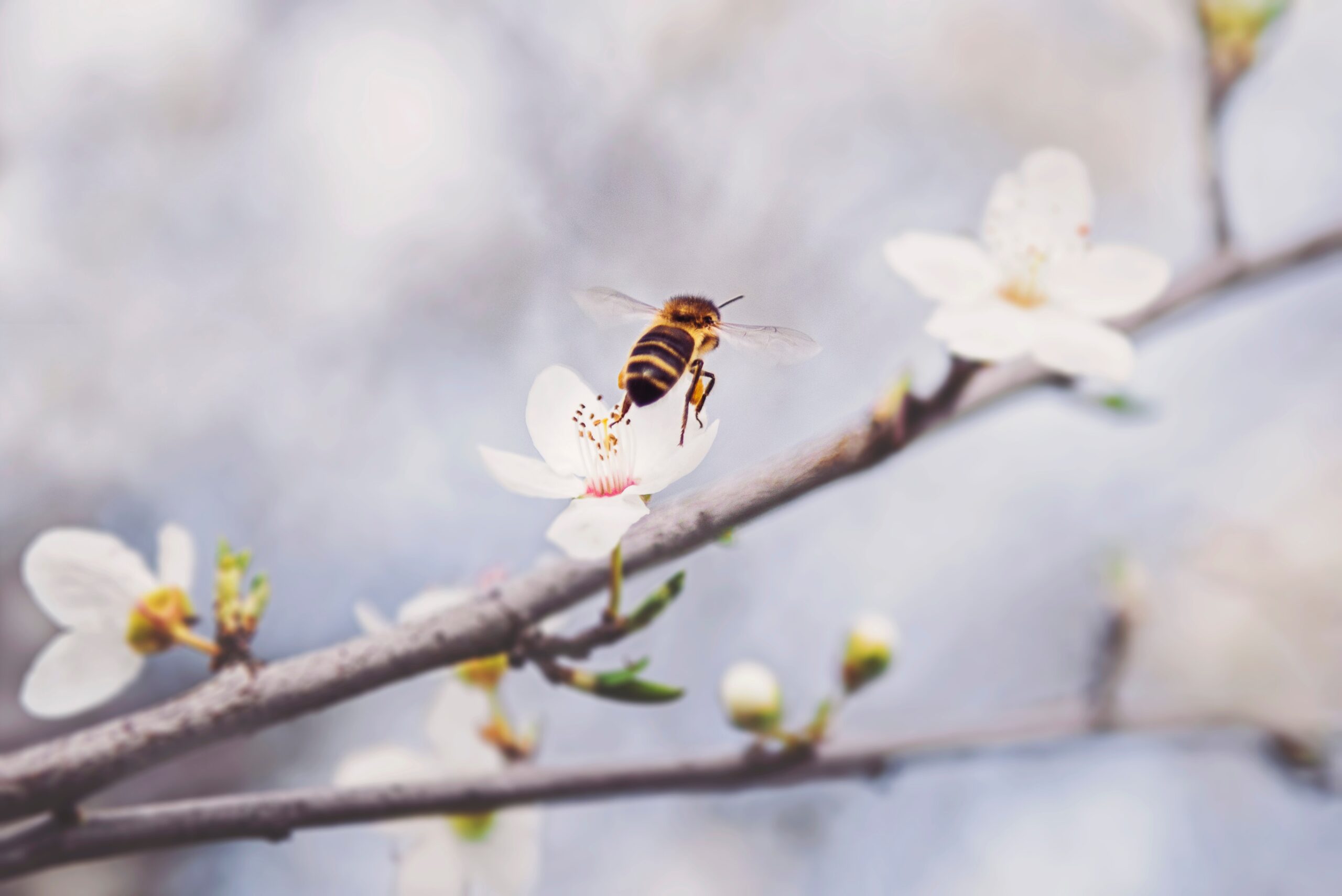


Have you seen bees or wasps in or around your Coachella Valley home? Bees and wasps typically do not harm humans unless their home is disturbed or they feel threatened. However, because bee and wasp stings can be dangerous, it’s important to have the issue dealt with quickly.
A professional pest control company can evaluate the situation and determine whether the bees or wasps are far enough to leave alone, or whether the nest should be removed. They can also remove old honeycombs to ensure no damage is done to your home, and that no eggs are left behind.
The experts at Rudy’s Termite & Pest Control are licensed Coachella Valley bee and wasp exterminators. We want to preserve bees and the important work they do for our ecosystem, so we’ll relocate them humanely. Contact us today for quick and safe bee and wasp removal.
What’s the difference between a bee and a wasp? With the exception of the Africanized species, honey bees rarely sting people, and only do so if provoked. However, wasps can be aggressive and territorial about their nests, and can sting multiple times. Bees are typically hairy, with six-legged bodies that are either entirely black, or black or brown with orange and yellow stripes. Wasps usually have smooth and shiny skin, two sets of wings, and a “pinched” waist. Depending on the species, they may be black, yellow, blue, or green in color.
In Southern California, we see four common bee types: the bumblebee, the carpenter bee, the European honey bee, and the Africanized honey bee. The two types of honey bees look very similar to one another, but bumblebees are the one most people think of when they picture a bee: with a striped body. Carpenter bees look similar to bumblebees, but they have a shiny abdomen.
The two types of wasp you might encounter in the Coachella Valley are solitary wasps (including paper wasps and mud daubers), and social wasps (including yellow jackets and hornets). Solitary wasps use their sting and venom to hunt for food, while social wasps create colonies and sting in self-defence.
Bees and wasps can enter a home in through its siding and settle in electrical boxes, attics, crawl spaces, chimney vents, and other small spaces. They can also build hives and nests in or around a tree.
How can you tell if you have a bee or wasp infestation? If you see bee hives or wasps’ nests in the corners of your home or garage, or see swarms congregating near your roof, keep family and pets away from the area. In particular, Africanized honey bees can be aggressive if they feel threatened, or hear loud noises.
The life cycle of a bee depends on its role. Bee colonies are populated with a queen bee, infertile female worker bees, and male drones. The queen bee can lay up to 1,000 eggs per day in a honeycomb. Fertilized eggs become female worker bees, and unfertilized eggs become male drones. Bee eggs hatch after three days, starting the larvae phase. In this phase, they have no wings, legs, or antennae. Depending on their role, in this phase they are fed a substance called royal jelly, or a combination of royal jelly, pollen, and honey. Larvae spin cocoons around themselves in a honeycomb cell and begins the pupal stage, where it grows into an adult bee.
The time from egg to adult bee is approximately 16 days for a queen, between 18-22 days for a worker bee. A queen bee lives for about two years. Female worker bees live anywhere from six weeks to six months, depending on the time of year. Male drones live for about 55 days on average, and die after mating with the queen.
The life cycle of a wasp begins in the spring. When a queen comes out of winter hibernation, it builds the foundation of a new nest to lay eggs in, which can be done 200-300 times per day. When the eggs hatch into larvae, they feed on protein and bugs. The larvae cover themselves with a silk covering and then become adults. By the summer, the wasp colony is full, and can contain thousands of wasps. At the end of summer, the queen wasp will find new mates to create new queens. Because there are no new larvae to feed, this is when drones can become more aggressive.
A queen wasp lives for about a year, while worker wasps live from about 12-24 days. The queen wasps are the only members of the colony that survive into the next spring.
Rudy’s Termite & Pest Control are licensed Coachella Valley bee and wasp control experts. Contact us today and let us solve the issue quickly and humanely.
Bees perform highly important work in our ecosystem, and are generally more concerned with collecting nectar and pollen than they are with humans and pets. However, they can swarm and sting if their hive is disturbed. If a bee stings someone with an allergy to it, it can cause highly dangerous anaphylactic shock, which is a medical emergency.
Wasps can sting multiple times and become aggressive if their hive is threatened. Allergic reactions to wasp stings may occur in humans and pets, which may need medical attention.
Dealing with bees or wasps nesting in the siding of your house or in a tree near your property must be done with caution. They can swarm and sting if threatened, and removing the hive is the only effective way of dealing with an infestation. This must be done by professionals who are trained and can perform the removal safely. They can also remove old honeycombs to ensure no damage is done to your home, and that no eggs are left behind.
Dealing with wasps nesting in the siding of your house or in a tree near your property must be done with caution. Wasps that make their way indoors can damage wood, walls, and ceilings. Wasps become aggressive if their nest is threatened, and removing the nest does not necessarily clear the infestation. This must be done by professionals who are trained and can ensure that lingering wasps do not remain on your property. In addition, solitary wasps perform a service to our ecosystem, and a professional will remove them humanely.
Bee or wasp stings can be life-threatening, so it’s important to call a Coachella Valley exterminator right away.